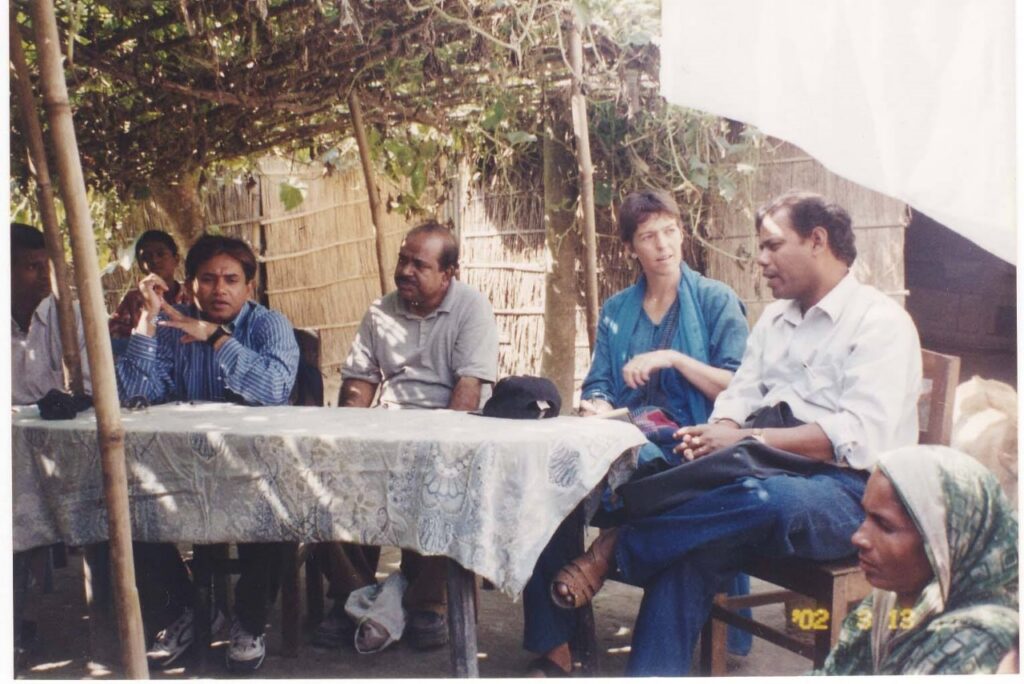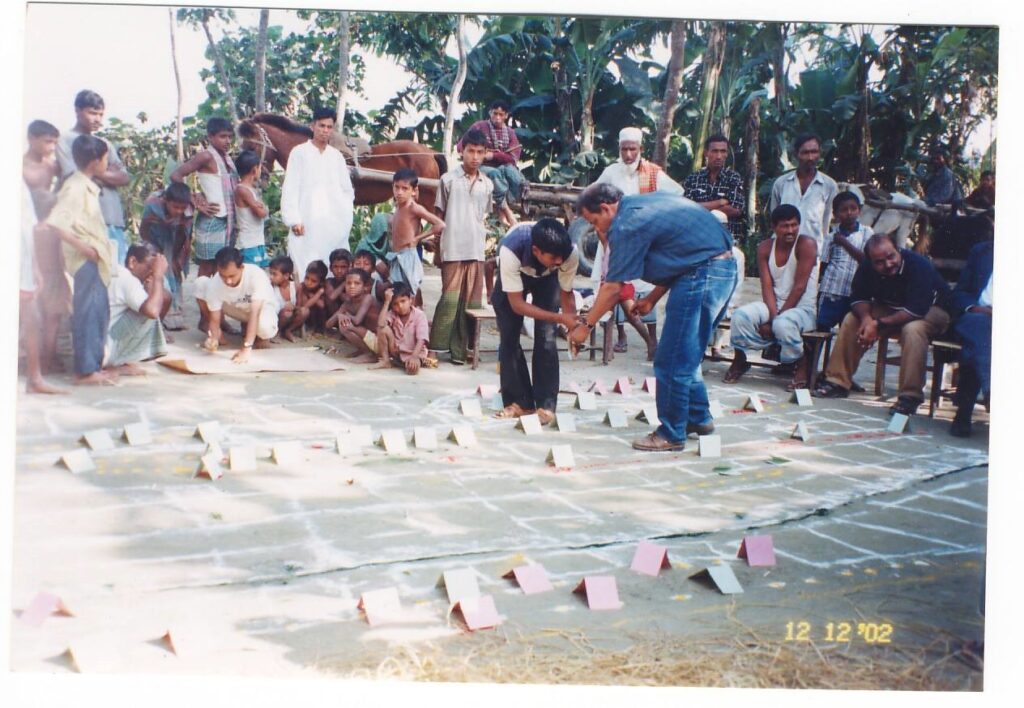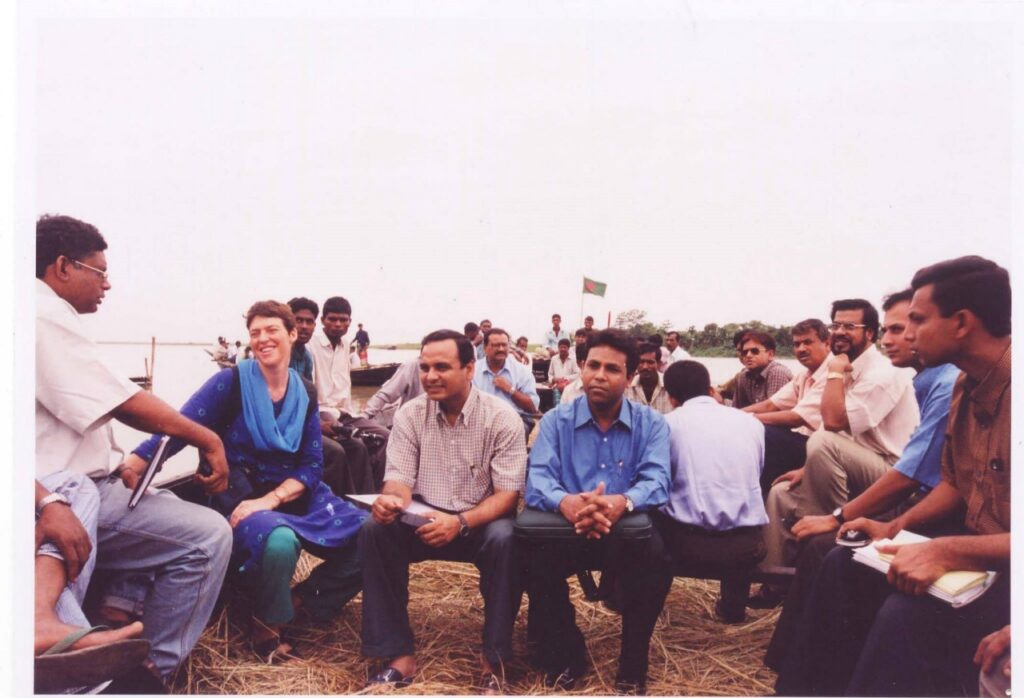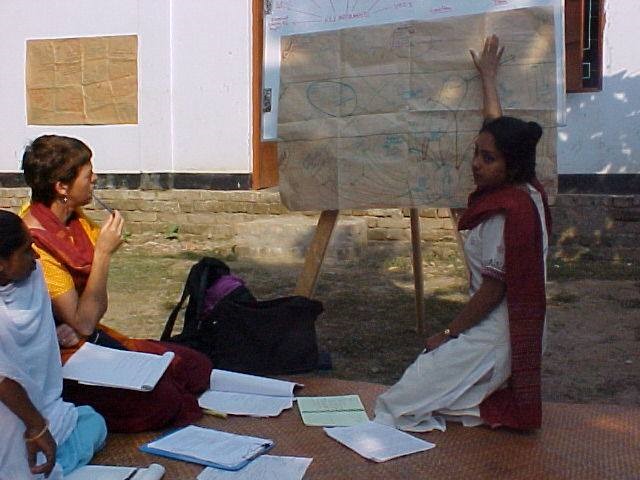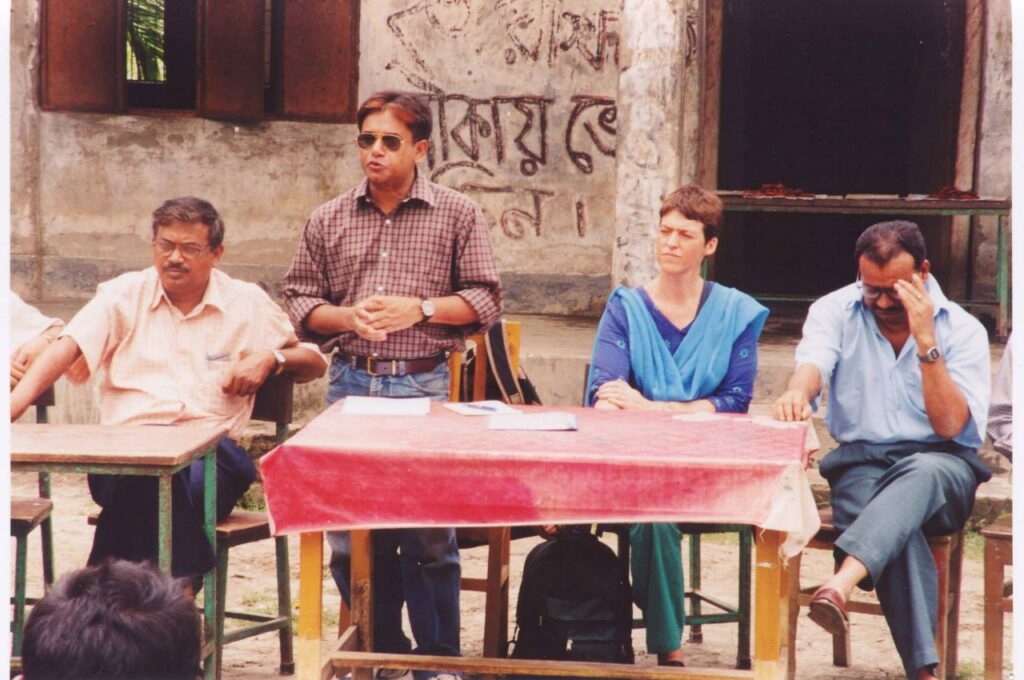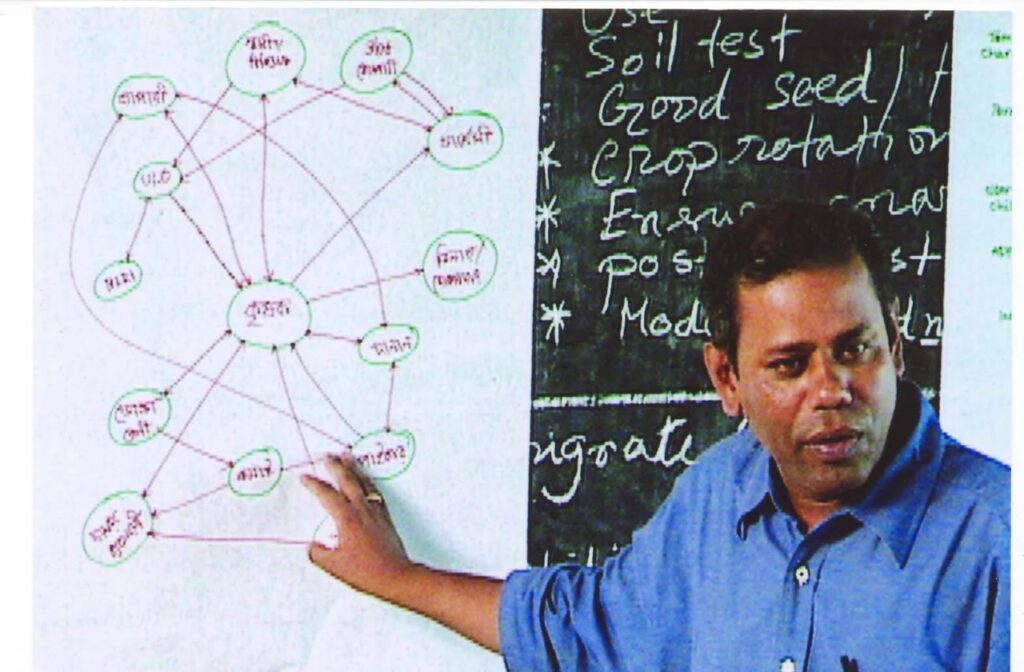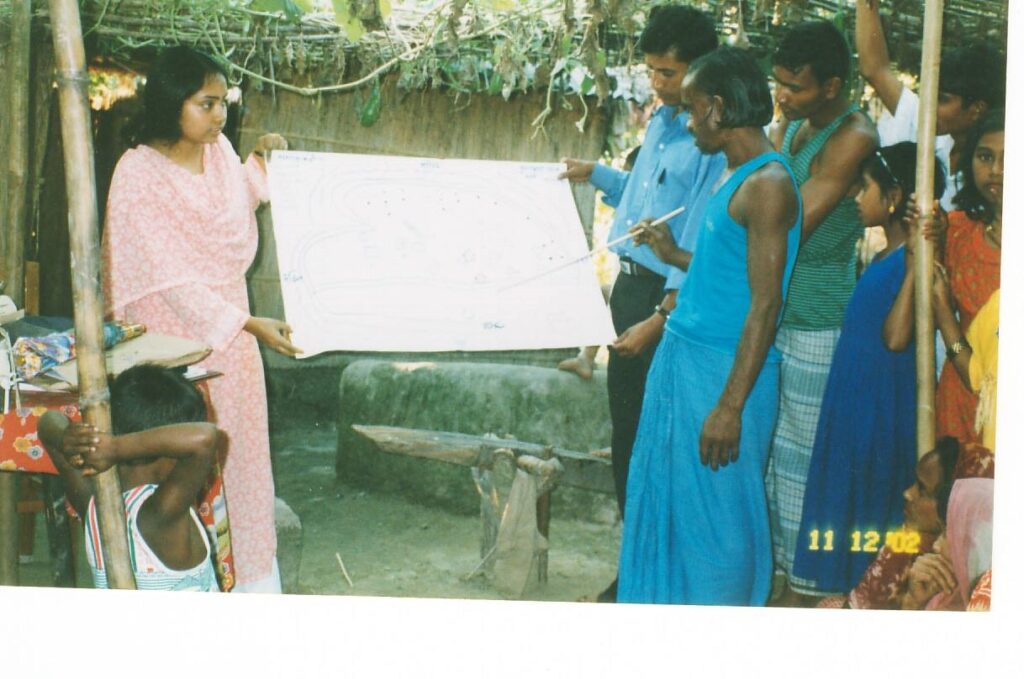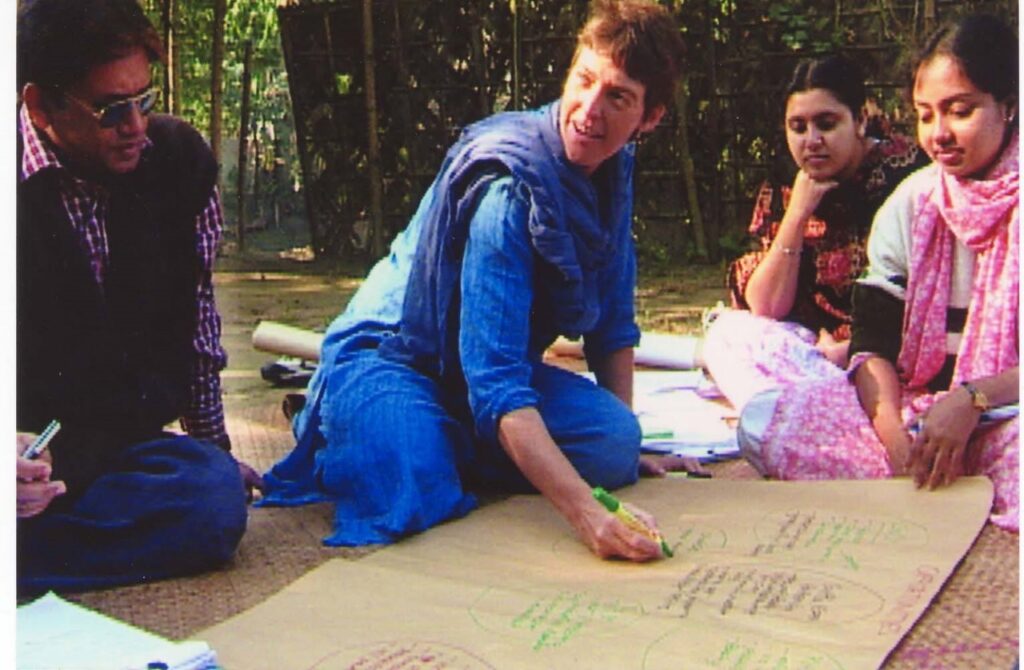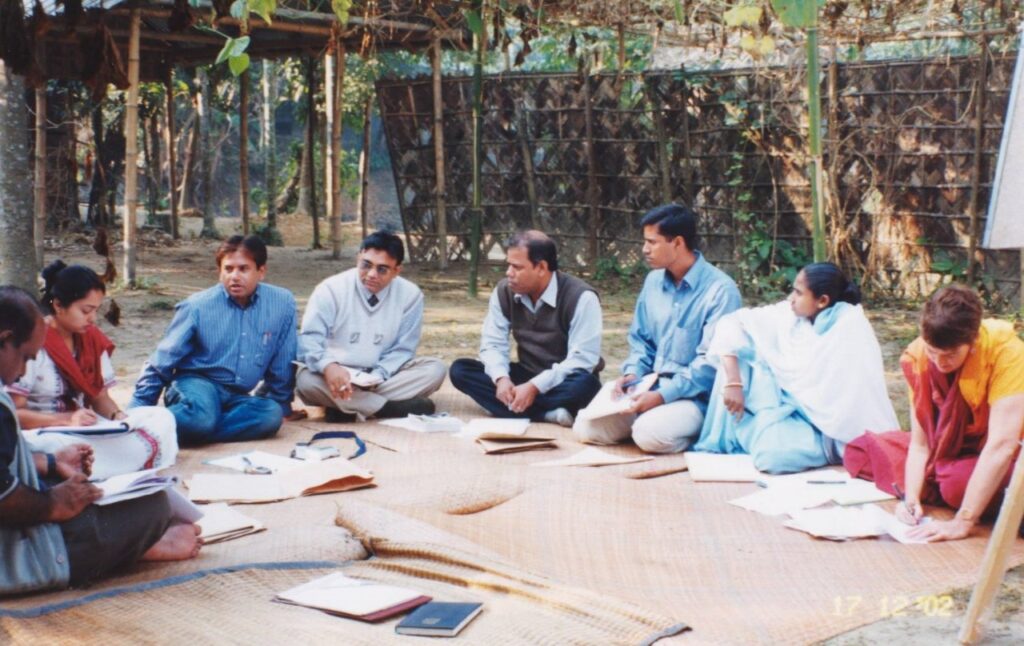This publication is an output from a research project funded by the United Kingdom Department for International Development (DFID) Crop Post-Harvest Programme. The views expressed are not necessarily those of DFID.
This research was supported by DFID’s crop post harvest programme and carried out over an 18 month period between November 2002 and May 2004. The research team and its partners (char dwellers, government research and extension staff, NGOs and private sector actors) used ‘actor oriented tools’ to identify the key linkages and partnerships used by char dwellers to access information, market opportunities and to develop innovations in chilli and beef fattening.
Analysing these key linkages, the research coalition identified specific interventions which could support or modify existing linkages or build new linkages to make chilli and livestock innovation systems work better for producers on the chars.
The research methodology and findings are described in detail in our main project report (Matsaert, H. Ahmed, Z. Salam, S. A. Munzure,A. Rahman,M. Hussein, F. and Islam, N. 2004 An Actor Oriented Analysis of Chilli and Beef Production in the Jamalpur Chars of Bangladesh).
The research aimed to develop actor oriented tools to improve institutional analysis and partnership building in project appraisal and planning. Specific outputs were:-
This research was located in the Jamalpur chars with the intention that the findings should inform and guide DFID’s forthcoming Chars Livelihood Development Programme.
Char based research was carried out in Kulpal and Nolshunda char, Sarishabari, Jamalpur. We also worked with other ‘actors’ in chilli and livestock production systems at the district and national level.
We selected chilli and beef fattening as focus enterprises after discussions with char dwellers and local extension staff in Sarishabari. Criteria for selecting these enterprises were:-
Our research followed an actor oriented approach, analysing these chilli and beef fattening innovation systems in terms of the linkages, information flows and coalitions between key actors in the system. The approach and research tools used are described in detail in the accompanying report: ‘Actor Oriented Tools for Analysis of Innovation Systems: Some guidelines from experience of analysing natural resource based innovation systems in Bangladesh’ (Matsaert et al 2004)
| Activity | Objectives |
| 1. Char based PRA and quantitative household survey. | To identify focus enterprises and key actors at the char upazila level. |
| 2. Wider network survey | To identify key actors for the focus enterprises at the regional and national level. |
| 3. Case study monitoring over a 12 month period. | To gain an understanding of links between key actors, key events and locations for the focus enterprises. |
| 4. Focus group discussions with ‘actor groups’. | To analyse findings, explore key links in depth and identify interventions to strengthen these innovation systems. |
